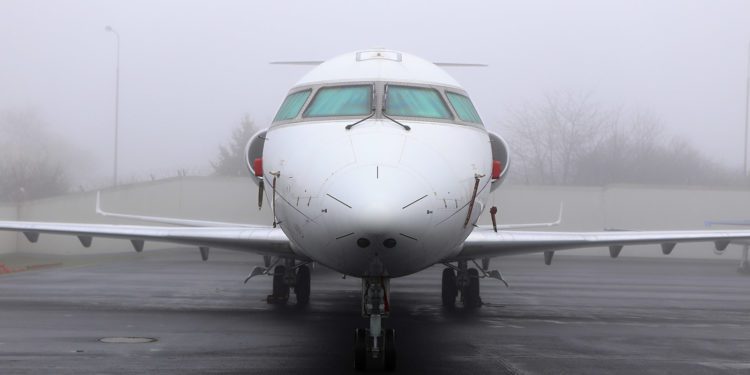Aviation Weather Issues – Fog – Part 1: Types of Fog

This business aviation blog post is part of a series on fog and its effects on business aviation.
Fog has the potential to significantly impact flight operations in various parts of the world. There are many different fog conditions to consider, and it’s important to understand the various mechanisms of fog creation.
The following is an overview of what you need to know:
1. Fog formation
Fog occurs when the atmosphere is saturated, or nearly saturated, with moisture. This occurs when temperature and dew point are brought close together. Fog results from either raising the dew point until it equals the temperature, or lowering the temperature to the dew point.
2. Fog versus mist
Both fog and mist impact visibility. Fog is a low cloud with visible condensation of sufficient density to obscure line of sight views and, therefore, potentially interfere with aviation operations. Fog differs from mist in that its water particles are minute and suspended and do not fall earthward. Mist is encoded as BR on METAR and TAF reports and is reported when visibility is 5/8 mile or greater.
3. Fog classifications
- Radiation Fog – Caused by radiational cooling of the earth’s surface, this type of fog can significantly affect aviation operations. Radiation fog develops only at night and over land. It can be localized to certain areas, or under the right conditions, may become widespread and persistent. In most cases, radiation fog is nocturnal – becoming thickest at night, right around sunrise, and dissipating by late morning. It may redevelop again right after sunset.
- Advection Fog – This is generated by fog in motion. It develops in one region and is transported by wind currents to a different location. This type of fog typically occurs along coastlines or between a cold wet surface and a warmer drier surface. Advection fogs can persist for days and has a greater impact on aviation operations than radiation fog.
- Upslope Fog – This fog occurs due to adiabatic cooling of rising air. It occurs when warm moist air is forced up a slope by the wind.
- Frontal Fog – This type of fog occurs in conjunction with the frontal surface in the colder air mass. It is precipitation-induced, due to the evaporation of falling rain. Within the realm of frontal fogs, warm frontal or stationary fog has the greatest impact on aviation operations.
- Freezing Fog – Occurs when air temperature is below freezing, and this can have significant impact on aviation operations. If the fog is dense enough, it may produce ice on aircraft surfaces. Another type of fog, ice fog, occurs when the temperature is very cold, less than -30⁰C (-22⁰F), and it’s composed of ice crystals. Ice fog occurs in very cold Arctic or Polar air regions. In ice fog situations the temperature is too cold for super-cooled water to occur.
4. ‘Fog freezing’ effects
Freezing fog occurs when the air temperature is below freezing. It consists mainly of super-cooled water droplets that deposit rime or glaze on objects or surfaces. Freezing fog can have significant impacts on aviation operations. Look for the descriptor FZ, on METARs and TAFs, to indicate freezing fog.
5. Additional reading: Aviation Weather Issues – Fog Series Index
Note: Links will be updated as articles are published.
- Types of fog
- Impact of fog
- Dealing with fog
Conclusion
While radiation fog is the most common type of fog, and usually has the greatest impact on aviation, operators must be prepared for a range of possible types of fog – depending on the destination, time of day and season of the year.
Questions?
If you have any questions about this article, or would like assistance with weather planning, contact me at stevearbogast@univ-wea.com.
Stay tuned for Part 2, which covers more considerations on fog and its effects on business aviation operators.




